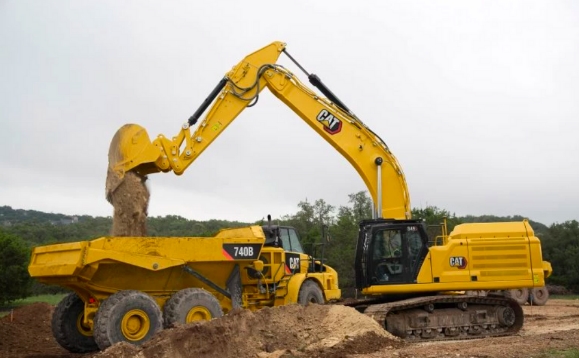New Insights from Abroad: A New Method for Protecting Piston Rods
If an excavator with a bucket arm is used for high-profile excavation, it may encounter the problem of falling rocks, which could damage the piston rod of the bucket cylinder. This issue does not occur on a conventional shovel because the cylinder and piston rod are shielded by the bucket arm. In contrast, the bucket arm of an excavator exposes the cylinder and piston rod at the very front. Once the piston rod is damaged by falling rocks, not only will there be repair costs involved, but the work will also be delayed.
The common protection for the piston rod usually employs a guard plate. Some people suggest using a dust cover. However, the telescopic dust cover, due to the need to consider the complete retraction of the piston rod, can only be very thin and thus fails to provide protection; it can only prevent dust. The guard plate also has drawbacks. Firstly, it has a structural weight; secondly, its installation is inconvenient; thirdly, during operation, one end of the guard plate rotates at the pin joint while the other end slides on the slide rail, which increases the maintenance workload; fourthly, after installing the guard plate, if the bucket cylinder needs to be repaired, the entire guard plate needs to be removed, which is rather troublesome.
Fortunately, Australians have now invented a new type of protective device. It is lightweight, easy to install and remove, and requires no maintenance. This device does not use rigid protective plates but instead uses flexible rubber. When a falling rock approaches, the rubber plate will change the direction of the rock, protecting the piston rod. Even if it still hits the piston rod, the speed will be greatly reduced. With the cushioning effect of the rubber, the piston rod will not be damaged.
This rubber guard plate is very easy to install. It only needs to be fixed at both ends with clamps. There is no rotation or sliding, no maintenance is required, and it is also very convenient to remove. In some maintenance scenarios, due to the natural curvature of the rubber plate, it is actually not necessary to remove it.
Of course, as can be seen from the diagram, this configuration is currently more suitable for dual boom cylinders. If it is used on a common single cylinder, the effect might be somewhat reduced. After all, it is not as stable. In conclusion, what we should learn from others is their approach.




